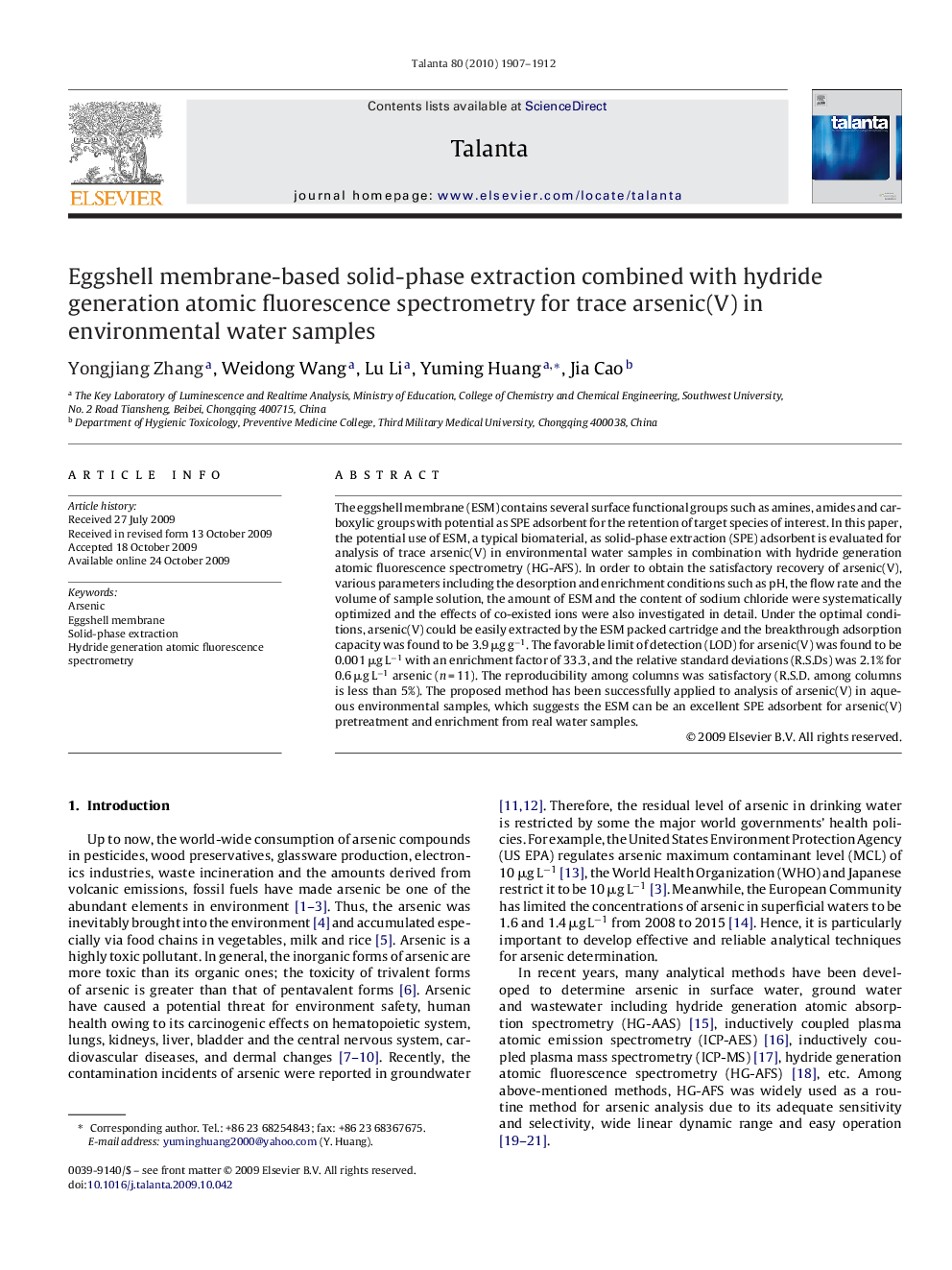| Article ID | Journal | Published Year | Pages | File Type |
|---|---|---|---|---|
| 1243001 | Talanta | 2010 | 6 Pages |
The eggshell membrane (ESM) contains several surface functional groups such as amines, amides and carboxylic groups with potential as SPE adsorbent for the retention of target species of interest. In this paper, the potential use of ESM, a typical biomaterial, as solid-phase extraction (SPE) adsorbent is evaluated for analysis of trace arsenic(V) in environmental water samples in combination with hydride generation atomic fluorescence spectrometry (HG-AFS). In order to obtain the satisfactory recovery of arsenic(V), various parameters including the desorption and enrichment conditions such as pH, the flow rate and the volume of sample solution, the amount of ESM and the content of sodium chloride were systematically optimized and the effects of co-existed ions were also investigated in detail. Under the optimal conditions, arsenic(V) could be easily extracted by the ESM packed cartridge and the breakthrough adsorption capacity was found to be 3.9 μg g−1. The favorable limit of detection (LOD) for arsenic(V) was found to be 0.001 μg L−1 with an enrichment factor of 33.3, and the relative standard deviations (R.S.Ds) was 2.1% for 0.6 μg L−1 arsenic (n = 11). The reproducibility among columns was satisfactory (R.S.D. among columns is less than 5%). The proposed method has been successfully applied to analysis of arsenic(V) in aqueous environmental samples, which suggests the ESM can be an excellent SPE adsorbent for arsenic(V) pretreatment and enrichment from real water samples.
